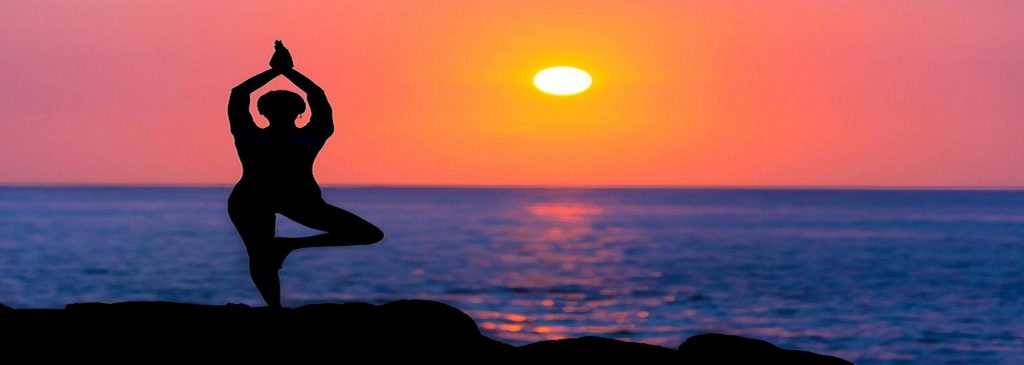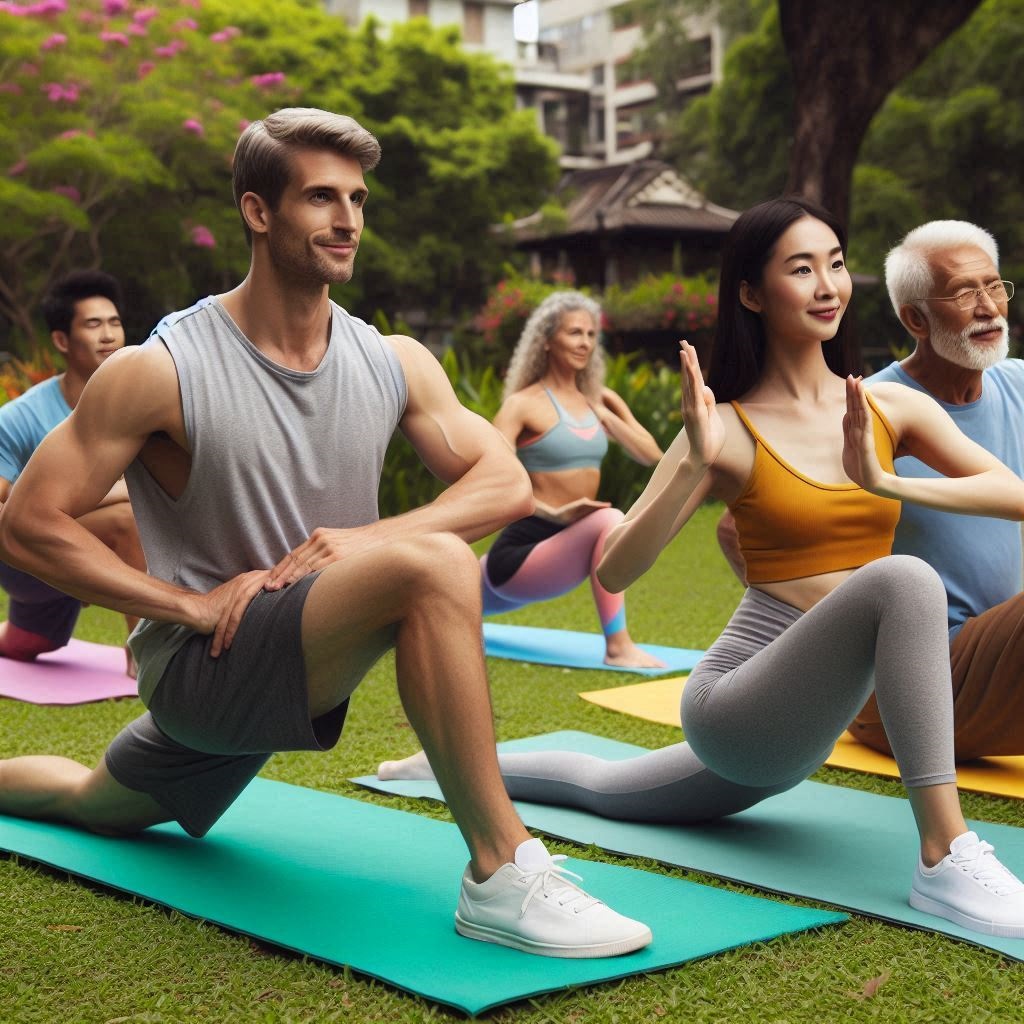Discover the transformative power of Yoga and Pilates through our comprehensive guide. These two synergistic practices offer a wealth of benefits for both the mind and body. Whether you’re a beginner or a seasoned practitioner, this page provides essential insights to help you seamlessly integrate Yoga and Pilates into your fitness routine. Enhance your flexibility, build strength, and foster mental well-being with these timeless disciplines.
Understanding Yoga and Pilates
Yoga Yoga is an ancient practice that originated in India thousands of years ago. It combines physical postures (asanas), breathing exercises (pranayama), and meditation to promote physical, mental, and spiritual well-being. Yoga emphasizes the connection between mind and body, aiming to achieve balance, flexibility, and inner peace.

Pilates Pilates is a physical fitness system developed in the early 20th century by Joseph Pilates. It focuses on strengthening the core muscles, improving posture, and enhancing overall body strength and flexibility. Pilates exercises are performed with an emphasis on controlled movements, breathing, and alignment.

Yoga for Beginners
Mountain Pose (Tadasana)
- Purpose: Mountain Pose is a foundational standing pose in yoga that helps improve posture and balance. It serves as the starting and ending position for many other poses.
- Benefits: This pose helps to align the spine, strengthen the legs, and improve overall body awareness. It also promotes mental clarity and focus.
- How to Perform: Stand with feet together or hip-width apart, arms by your sides. Distribute your weight evenly across both feet. Engage your thigh muscles, lift your kneecaps, and lengthen through your spine. Relax your shoulders and keep your gaze forward.
Downward Facing Dog (Adho Mukha Svanasana)
- Purpose: This pose is a staple in many yoga practices, offering a full-body stretch while strengthening various muscle groups.
- Benefits: It stretches the hamstrings, calves, and shoulders, and strengthens the arms, legs, and core. It also helps to relieve stress and calm the mind.
- How to Perform: Start on your hands and knees, with your wrists directly under your shoulders and knees under your hips. Lift your hips towards the ceiling, straighten your legs, and press your heels towards the floor. Keep your head between your arms and your gaze towards your feet.
Child’s Pose (Balasana)
- Purpose: Child’s Pose is a resting pose that gently stretches the back and promotes relaxation. It is often used as a restorative posture between more challenging poses.
- Benefits: This pose stretches the lower back, hips, thighs, and ankles. It also helps to calm the mind and relieve tension and fatigue.
- How to Perform: Kneel on the floor with your big toes touching and knees spread apart. Sit back on your heels, then fold forward, bringing your forehead to the floor. Extend your arms in front of you or rest them alongside your body.
Warrior I (Virabhadrasana I)
- Purpose: Warrior I is a powerful standing pose that builds strength and stability in the lower body while opening the chest and shoulders.
- Benefits: This pose strengthens the legs, ankles, and arms. It also stretches the chest, lungs, and shoulders, and improves focus, balance, and stability.
- How to Perform: Start in a standing position. Step one foot back, keeping the front knee bent and the back leg straight. Turn the back foot slightly outward. Raise your arms overhead, palms facing each other, and look up at your hands.
Bridge Pose (Setu Bandhasana)
- Purpose: Bridge Pose is a backbend that opens the chest and strengthens the back and glutes.
- Benefits: This pose strengthens the back, glutes, and hamstrings, stretches the chest, neck, and spine, and stimulates the abdominal organs. It can also help to alleviate stress and mild depression.
- How to Perform: Lie on your back with your knees bent and feet flat on the floor, hip-width apart. Press your feet and arms into the floor, lift your hips towards the ceiling, and clasp your hands under your back. Keep your thighs parallel and your chest lifted.
Pilates for Beginners
The Hundred
- Purpose: The Hundred is a classic Pilates exercise that activates the core muscles and improves circulation.
- Benefits: This exercise strengthens the abdominal muscles, increases stamina, and enhances breathing efficiency. It also warms up the body at the beginning of a Pilates session.
- How to Perform: Lie on your back with your knees bent and legs lifted to a tabletop position. Lift your head, neck, and shoulders off the mat, extend your arms alongside your body, and begin pumping your arms up and down while inhaling for five counts and exhaling for five counts, totaling 100 pumps.
Roll-Up
- Purpose: The Roll-Up is a fundamental Pilates exercise that strengthens the abdominal muscles and stretches the spine.
- Benefits: This exercise improves core strength, spinal flexibility, and coordination. It also helps to articulate the spine segment by segment.
- How to Perform: Lie on your back with your legs straight and arms extended overhead. Slowly roll up to a seated position, reaching for your toes, and then roll back down to the starting position, articulating each vertebra.
Leg Circles
- Purpose: Leg Circles focus on improving hip mobility and core stability.
- Benefits: This exercise strengthens the core, hips, and thighs, and enhances joint mobility and stability.
- How to Perform: Lie on your back with one leg extended on the mat and the other leg lifted towards the ceiling. Circle the lifted leg in small, controlled motions, keeping your core engaged and hips stable. Repeat in both directions.
Single Leg Stretch
- Purpose: The Single Leg Stretch targets the abdominal muscles and improves coordination.
- Benefits: This exercise strengthens the core, particularly the lower abs, and enhances coordination and control.
- How to Perform: Lie on your back with your knees bent and legs lifted to a tabletop position. Lift your head, neck, and shoulders off the mat. Extend one leg straight while pulling the other knee towards your chest, then switch legs in a controlled manner.
Pelvic Curl
- Purpose: The Pelvic Curl strengthens the glutes, hamstrings, and lower back while promoting spinal articulation.
- Benefits: This exercise improves core strength, spinal flexibility, and pelvic stability. It also helps to align the pelvis and lower back.
- How to Perform: Lie on your back with your knees bent and feet flat on the floor, hip-width apart. Press your feet into the floor, lift your hips towards the ceiling, and articulate your spine one vertebra at a time until you form a straight line from your shoulders to your knees. Lower back down with control.
Benefits of Yoga and Pilates
Improved Flexibility Regular practice of yoga poses significantly enhances flexibility by increasing the range of motion in joints and muscles. Yoga involves various stretches and movements that gradually lengthen muscles and improve elasticity. As flexibility improves, everyday movements become easier and more fluid, reducing the risk of injuries and muscle strain.
Enhanced Strength Many yoga poses require holding the body’s weight in various challenging positions, which builds muscle strength. Poses like Plank, Warrior, and Downward Dog engage multiple muscle groups simultaneously. This not only tones muscles but also increases overall body strength. Enhanced muscle strength supports better balance, stability, and endurance.
Stress Relief Yoga is renowned for its ability to reduce stress and promote relaxation. The practice incorporates deep breathing techniques and meditation, which activate the parasympathetic nervous system, promoting a state of calm and relaxation. Regular yoga practice lowers cortisol levels, the body’s primary stress hormone, and helps manage anxiety and stress-related symptoms.
Better Posture Practicing yoga can correct poor posture habits and align the spine. Many yoga poses focus on proper alignment and core strength, which are essential for maintaining good posture. Regular practice helps to strengthen the muscles that support the spine, reducing slouching and promoting an upright stance. Improved posture alleviates back pain and enhances overall body mechanics.
Mental Clarity Yoga enhances mental clarity and focus through meditation and mindfulness practices. The meditative aspects of yoga encourage present-moment awareness and concentration, which improve cognitive function. Mindfulness techniques help clear the mind of distractions, reduce mental clutter, and enhance overall mental sharpness. This clarity translates to better decision-making and improved productivity in daily life.
Core Strength Pilates is highly effective at strengthening the core muscles, including the abs, back, and pelvic floor. Core strength is crucial for overall stability and balance. Pilates exercises focus on controlled movements that engage and strengthen these core muscles, providing a solid foundation for all physical activities. A strong core also supports the spine and reduces the risk of lower back pain.
Improved Posture Pilates emphasizes alignment and control, which helps improve posture and reduce the risk of back pain. The exercises teach awareness of spinal alignment and promote proper positioning of the body. As a result, individuals develop a better understanding of how to maintain good posture throughout the day. Improved posture reduces the likelihood of developing musculoskeletal issues.
Flexibility Pilates exercises gently stretch and lengthen muscles, increasing overall flexibility. The controlled, flowing movements of Pilates help elongate the muscles, improving their elasticity and joint range of motion. Enhanced flexibility makes everyday activities easier and reduces the risk of injuries related to muscle tightness.
Body Awareness Pilates improves body awareness by teaching individuals to recognize and correct movement patterns. The practice involves precise, deliberate movements that require attention to how the body moves and feels. Increased body awareness helps individuals identify and correct imbalances, enhancing overall movement efficiency and reducing the risk of injury.
Injury Prevention Strengthening and balancing the muscles can prevent injuries and enhance overall physical function. Pilates focuses on building balanced muscle strength and flexibility, which supports the body’s natural alignment and mechanics. By addressing muscle imbalances and promoting functional movement patterns, Pilates reduces the likelihood of injuries and enhances overall physical performance. This is especially beneficial for athletes and individuals recovering from injuries.
